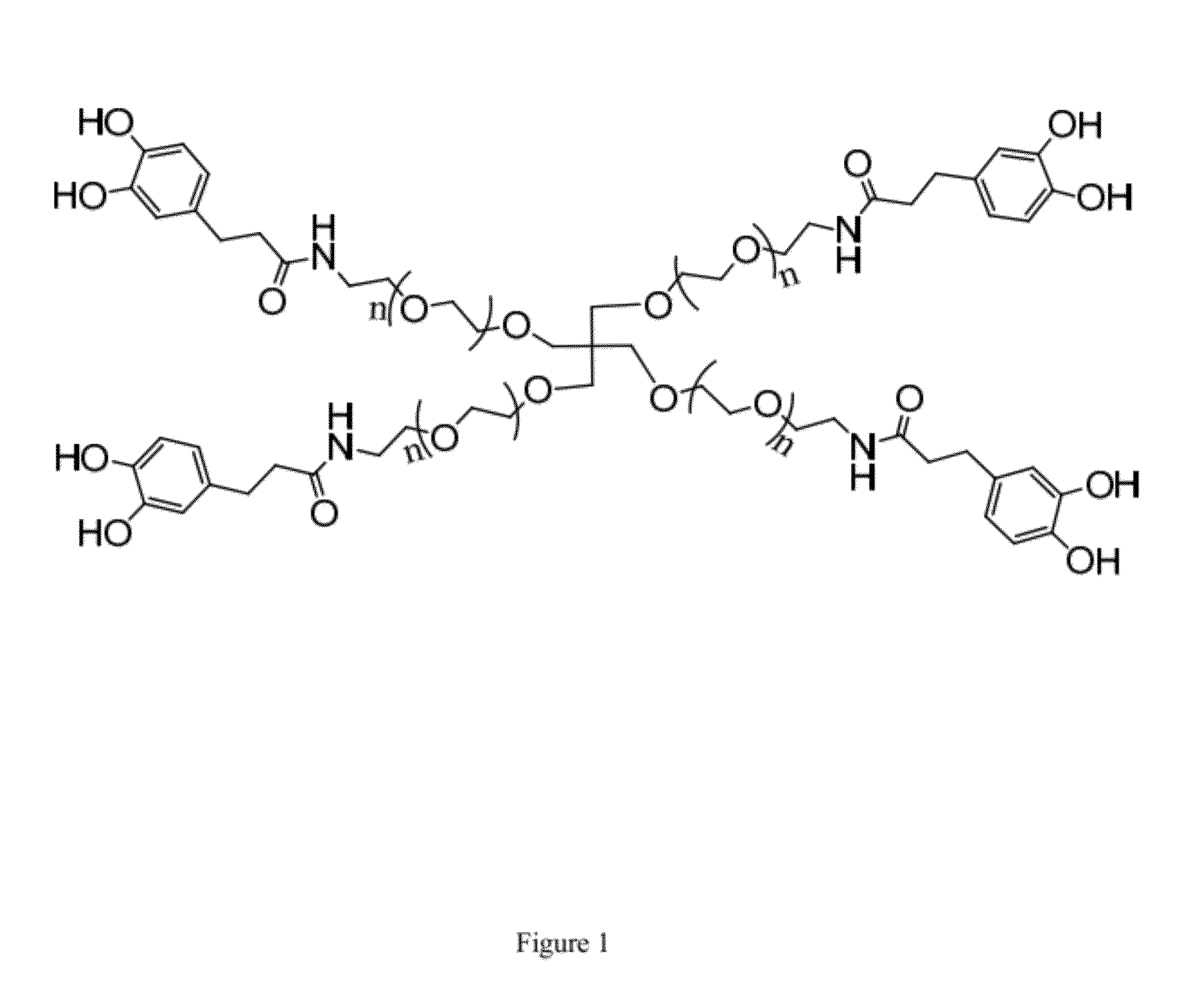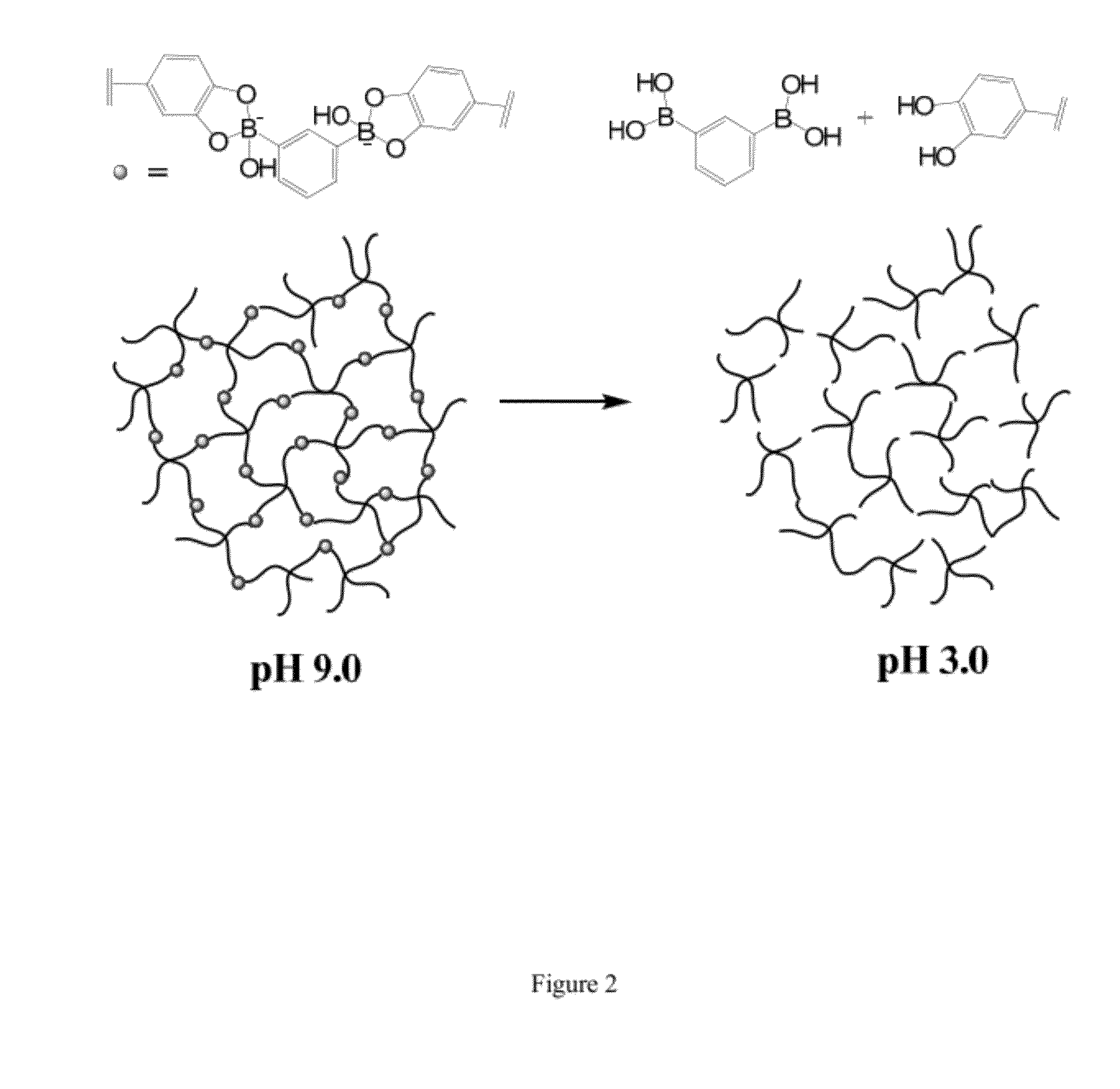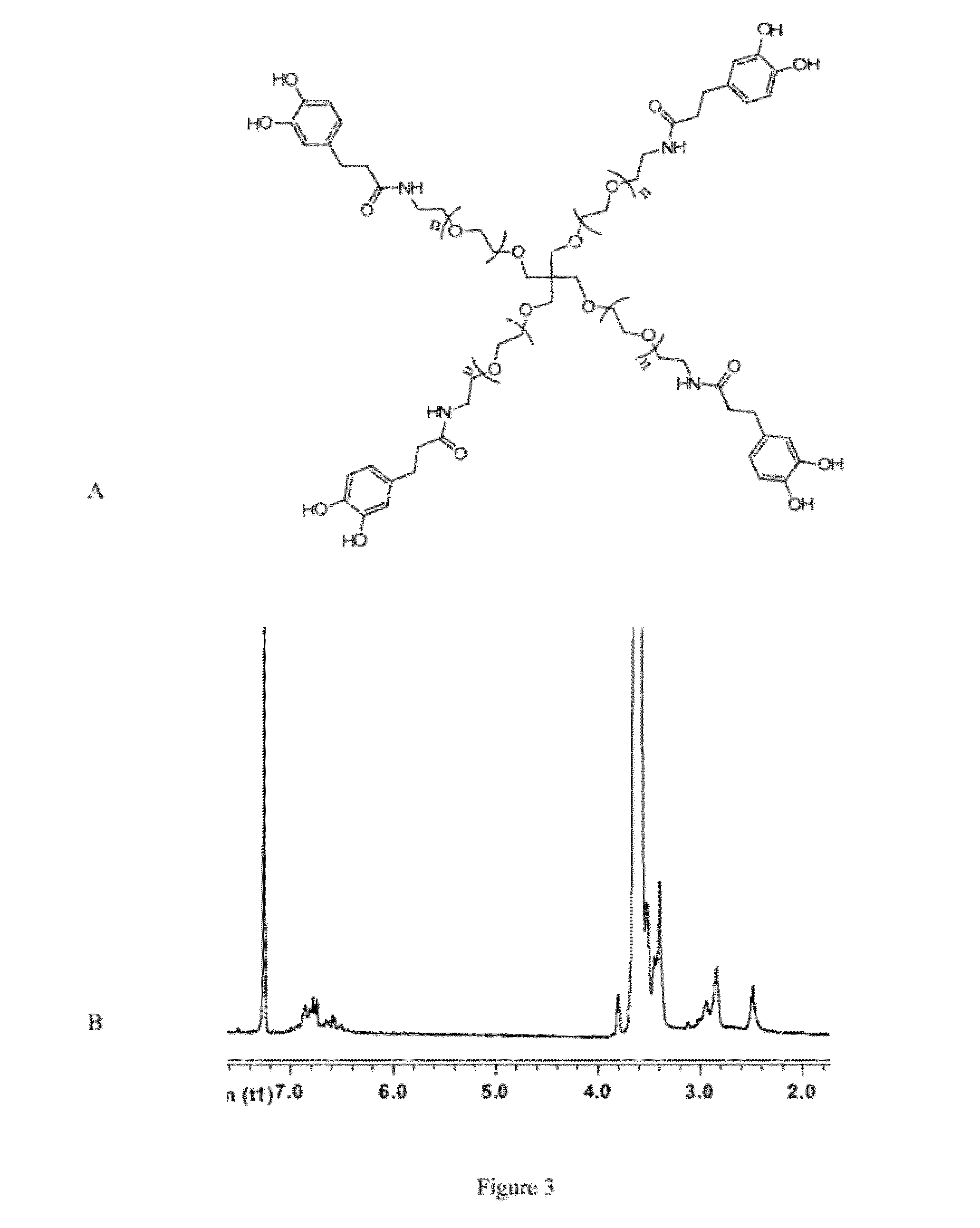pH Responsive Self-Heating Hydrogels Formed By Boronate-Catechol Complexation
a self-heating, hydrogel technology, applied in the field of hydrogels, can solve the problems of poor mechanical properties and general less stable physical hydrogels
- Summary
- Abstract
- Description
- Claims
- Application Information
AI Technical Summary
Benefits of technology
Problems solved by technology
Method used
Image
Examples
example 1
Synthesis of Hydrogel by cPEG Complexation with BDBA
A. Introduction
[0094]In this Example, we used cPEG (FIG. 1) as a simple model polymer to construct a hydrogel of the invention (FIG. 2). We chose cPEG because of its branched architecture providing catechol multivalency (FIG. 3), suitable molecular weight (11200 g / mol) (FIG. 4), and the low tissue inflammatory response of cPEG gels. To form gels, solutions of cPEG and BDBA in PBS buffer were mixed at 20° C. and neutralized to alkaline pH. Hydrogels formed within 30 min of mixing at pH 9.0±0.5 (FIG. 5). The pH of 9.0 for complexation was chosen because the pKa of catechol and BDBA are 9.3 and 8.7, respectively, and the optimal pH for complexation is located between the two pKa values.
B. Materials and Methods
[0095]Materials.
[0096]4-arm PEG amine (Mw 10,000 g / mol) and monofunctional PEG amine (mPEG-NH2, Mw 5,000 g / mol) were purchased from Laysan Bio Inc. 3-(3,4-dihydroxyphenyl) propionic acid (DHPA; Alfa Aesar, 98%), Triethylamine (Al...
example 2
Synthesis of Hydrogel by PDMA-co-PNDHPMA or POEGMA-co-PNDHPMA Complexation with NPBA-PEG-NPBA or PBA-PEG-PBA
A. Introduction
[0118]In Example 1 above, we reported the formation of pH-responsive hydrogels which were cross-linked by complexation of 1,3-benzenediboronic acid and a 4-arm PEG catechol (cPEG) under basic conditions. Due to the relatively high pKa of catechol (9.3), the hydrogels prepared in Example 1 may have limited applications under physiological condition (i.e., pH of 7.4). In this Example, we demonstrate the synthesis of pH-responsive, self-healing hydrogels at physiological pH in aqueous solution.
[0119]The hydrogels are made by complexing a nitro-substituted catechol-containing copolymer with a polyethylene glycol-based cross-linker having a terminal phenylboronic acid moiety at each end. Specifically, a statistical copolymer containing nitro-substituted catechol, poly(N,N′-dimethylamino ethyl methacrylate)-co-poly(6-nitro-2-(3,4-dihydroxy-6-nitrophenyl)ethyl methacry...
example 3
Biocampatability of Hydrogel formed by POEGMA-co-PNDHPMA Complexation
[0149]In Example 2 above, we reported the formation of hydrogels formed by POEGMA-co-PNDHPMA complexation. In this example, we report the results of a mammalian cell-viability assessment showing that the hydrogels of the disclosed hydrogels are non-toxic, and thus biocompatible. These results demonstrate that the disclosed hydrogels may be safely used for a variety of in-vivo applications, such as in tissue engineering and drug delivery applications.
[0150]Cell viability was measured using a proliferative MTS assay. 3T3 fibroblasts were seeded in a multi-well culture plate, maintained and incubated, and exposed to the hydrogel made from POEGMA-co-PNDHPMA complexation at 37° C. for 24 to 48 h. 2-(4′,5′-dimethyl-2′-thiazolyl)-3-(4′-sulfophenyl) (MTS) solution was then added to each well; the MTS in metabolically active cells is converted into a colored, soluble formazan product. Absorbance at 490 nm was recorded with ...
PUM
| Property | Measurement | Unit |
|---|---|---|
| molecular weight | aaaaa | aaaaa |
| molecular weight | aaaaa | aaaaa |
| molecular weight | aaaaa | aaaaa |
Abstract
Description
Claims
Application Information
 Login to View More
Login to View More - R&D
- Intellectual Property
- Life Sciences
- Materials
- Tech Scout
- Unparalleled Data Quality
- Higher Quality Content
- 60% Fewer Hallucinations
Browse by: Latest US Patents, China's latest patents, Technical Efficacy Thesaurus, Application Domain, Technology Topic, Popular Technical Reports.
© 2025 PatSnap. All rights reserved.Legal|Privacy policy|Modern Slavery Act Transparency Statement|Sitemap|About US| Contact US: help@patsnap.com



